
What is a rash guard?
A rash guard is a form-fitting athletic shirt that protects your skin from chafing, sunburns, and surfboard rash during water activities. It typically features long sleeves, but there are also short-sleeved rash guards for those who prefer more breathability and range of motion.
Quick links:
Why is it called a rash guard?
Check out our men’s rash guard collection. With UPF 50+ sun protection blocking 98% of UVA and UVB rays, these long-sleeved rash guards are great for all-day sun protection and pair well with your favorite swim trunks.
This scuba blue long-sleeved rash guard is perfect for a day at the beach, by the pool, or at the water park, and provides extra sun protection for your chest, arms, and shoulders.
Why is it called a rash guard?
A rash guard gets its name from its ability to protect the body against rashes. More specifically, the tight-fitting surf shirt helps prevent two common rashes that can occur in water sports and beach activities—surf rash and sun rash.
Surf rash is caused by friction and abrasion from surf wax, sand, and saltwater rubbing against the skin over and over. Sun rash occurs when UV exposure goes unchecked for too long, with damaging rays leading to redness, pain, and swelling. It can be a precursor for (or can accompany) sun poisoning.
With an extra layer of protection, the rash guard prevents uncomfortable irritation. Its smooth fabric defends against surf rash, while UPF-rated material helps protect the skin from sun damage.
Key features of rash guards
Our high-quality rash guards offer the following features:
- Full-length zip
- Neck collar
- Zipper garage
- Zipper guard
- Versatile sizes
- Long and short sleeves
- Crop top
Full-length zip
Our rash guard shirts have a zipper that extends the full length of the garment to make dressing and undressing a breeze. It also allows for easy ventilation when needed.
Neck collar
A neoprene collar lines the neck opening for comfort and protection from skin chafing. The snug fit of the collar also helps block water entry near the zipper region.
Zipper garage
The top portion of the zipper has a small extra flap referred to as a "garage" that conceals and protects the end when fully zipped up. This guards the skin from potential abrasion with the closed metal teeth.
Zipper guard
We've put padding along the outside edge of the zipper base. The padding of the zipper guard helps prevent scratching or pinching from the zipper pull and metal teeth.
Versatile sizes
We cater to body shapes and sizes of all kinds. Our women’s rash guard collection offers sizes ranging from XS to 3X, while our men’s line of rash guards has sizing from small to 3X.
Long and short sleeves
Our rash guard selection includes both full long-sleeve and short-sleeve options. Long-sleeve rash guards provide maximum skin coverage and sun protection. The short sleeve designs allow for more flexibility and range of motion while still covering the torso.
Crop top
In addition to our full-length rash guards, we offer stylish cropped rash guard tops. These cover and protect the chest, back, and midriff areas while leaving the stomach and lower torso exposed.
The benefits of rash guards
Our rash guards offer the following benefits:
- Abrasion and irritation protection
- Performance enhancement
- Extra warmth
- Durability
- Compression
- Style expression
- UV protection
Abrasion and irritation protection
Our rash guards prevent abrasion, chafing, and skin irritation. The smooth fabric layers serve as a barrier between bare skin and activity gear, boards, or playing surfaces. This helps prevent painful rashes, harness chafe, and turf burns.
Performance enhancement
The flexible, stretch fit of our rash guards improves range of motion while also boosting athletic performance. Compression increases blood flow and oxygen, while breathability regulates body temperature. Rash guards allow outdoor athletes to remain comfortable and focused.
Extra Warmth
The tight compression fit of our rash guards provides the body with additional warmth in cool water. By trapping a thin layer of water between the skin and fabric, rash guards help maintain higher body temperature during water activities.
The quick-drying material also limits heat loss once out of cold water by not allowing a breeze directly on the skin. Ultimately, our rash guards offer extra warmth when enjoying the water.
Durability
With reinforced stitching and durable technical fabric, our rash guards are designed to hold up through repeated rugged use. They maintain structural integrity after exposure to salt water, chlorine, waves, and abrasion. This resilience makes them a long-lasting apparel investment.
Compression
The form-fitting cut of our rash guards provides beneficial compression to the muscles. This can boost athletic circulation while also reducing the onset of fatigue. The flexible second skin fit allows unrestricted mobility for paddling, swinging, and reaching movements.
Style expression
With so many different colors, prints, and designs, our rash guards allow you to showcase your personal style. Mix and match solid colors and patterns to create a customized watersports look. Or coordinate with our collection of board shorts, bikinis, or wetsuits for a trendy, stylish finish.
UV protection
Our rash guards offer UV protection. The fabric we use is rated UPF 50+ for the highest level of sun protection, blocking 98% of UVA and UVB rays.
This added benefit helps protect the skin from harmful sun rays, making rash guards a practical option for extended outdoor activities.
To protect yourself from the dangers of ultraviolet radiation, check out this hourly UV index forecast and take cover during high UV periods.
Types of rash guards
Our rash guards come in a variety of styles to suit different body types and personal preferences. Some of the popular styles include:
- Long-sleeved rash guards: feature full arm protection with long sleeves, along with a complete front zipper and professional surf-inspired look.
- Short-sleeved rash guards: these are optimal for warmer environments where breathability takes priority over maximum skin protection.
- Crop-top rash guards: feature long sleeves and provide extra sun protection on your chest and shoulders.
You should choose the rash guard style best suited for your body type, comfort level, and personal taste.
This tropical crop top blends color and comfort with practicality and style. It features a gorgeous foliage pattern set on a vibrant orange background. Pair it with some matching swim bottoms for a cohesive look! Perfect for a day out around the beach, or pool or just going for a stroll.
How do I choose the right rash guard?
Here are some tips on how to choose the right rash guard for you:
- Consider the fabric. Polyester and nylon blends are common. They wick moisture, dry quickly, and provide UV protection. Some have stretch or spandex added for a better range of motion.
- Match the thickness to the climate. Thinner, lightweight guards work well for warm climates and summer. Thicker ones keep you warmer for cooler water and air temps.
- Get the right fit. Rash guards work best when they're form-fitting but not restrictive. Size up if between sizes. Men may want a longer torso length.
- Think about features. Some have thumb loops to keep sleeves down. Others have flatlock stitching to prevent chafing. Look for guards with UPF rating for sun protection.
- Choose a comfortable neck style. Crew neck, polo collar, etc. If doing lots of grappling, a rash guard with a high collar can prevent mat burn.
- Consider the closure. Zippers allow more ventilation as needed. Pullovers are simpler but can be trickier to take on/off, especially if wet.
- Pick useful colors and prints. Solid colors show skin trouble spots during training. Fun prints express personal style. Bright colors are good in open water swims for visibility.
- Focus on the purpose. Will it be for surfing, water skiing, or casual wear? Pick fabrics, features, and colors accordingly.
When to wear a rash guard?
Here are the main situations when wearing a rash guard is recommended:
- Surfing: rash guards are commonly worn when surfing to prevent abrasion from the surfboard wax and irritation from the sun and saltwater, helping avoid painful rashes.
- Other water sports: for activities such as kayaking, stand-up paddleboarding, kitesurfing, etc. the sun protection and abrasion resistance make rash guards very popular.
- Swimming outdoors: when swimming outside in the sun for extended periods, a rash guard provides needed UV protection to help avoid sunburns.
- Snorkeling and diving: the tight fit allows freedom of movement while covering the skin from stings and abrasion. Bright colors aid visibility.
- Paddling: for sports such as dragon boat racing, outrigger canoeing, etc. rash guards mean less irritation from gripping paddles for long periods.
- Sun protection: rash guards work for all outdoor situations with strong sun exposure (e.g. hiking, golfing, yard work, and theme parks).
- Crowded beaches: they prevent the chafing sand burn from people brushing against each other.
- Workouts outdoors: the lightweight, breathable fabric keeps you cooler when exercising outside.
- Sports activities: they are also commonly worn in grappling sports such as mixed martial arts (MMA), Brazilian jiu-jitsu, wrestling, and judo. The tight and durable material helps prevent mat burn and irritation to the skin from constant contact.
- Around the house: rash guards allow gardeners, car washers, and outdoor chore doers to stay protected.
Rash guard vs. swim shirt
The terms “rash guard” and “swim shirt” are used interchangeably, and a rash guard is a type of swim shirt. For this article, we’ll draw a few distinctions between a rash guard and a regular swim shirt.
Purpose
- Rash guards offer rash protection during watersports and recreation. They guard against abrasion and sun exposure that causes rashes.
- Swim shirts focus more on modesty and covering the body while swimming. Less emphasis on protection.
Fabric
- Rash guards use fabrics like spandex and nylon blends that are form-fitting, quick-drying, and often have UPF sun protection.
- Regular swim shirts may have loose-fitting, lighter fabrics like polyester that dry reasonably fast but don't cling as tightly.
Features
- Rash guards emphasize functionality for watersports with UV protection, tight fit, stretch, quick dry capacity, and flatlock stitching.
- Swim shirts focus on style and modesty rather than technical features. Some do offer UV protection.
Usage
- The snugness and protective qualities make rash guards ideal for surfing, paddling, water polo, and other water athletics.
- Swim shirts work well for casual swimming and beachwear when more coverage or style is preferred over hardcore performance features.
Choose Swimzip for your swimwear
At SwimZip, our collection of rash guard styles will make you look and feel your best. Our rash guards are not only fashionable but also provide complete sun protection, blocking 98% of the sun’s harmful UVA & UVB rays. They are made of the highest-rated, most comfortable UPF 50+ sun-protective fabric, and are quick-drying and chlorine-resistant.
Whether you're planning a beach day or a pool party, our rash guards are a must-have addition to your wardrobe. They can also be a go-to piece of gear for surfers and water sports enthusiasts. They are available in a variety of colors, styles, and sizes, ensuring there's a perfect fit for everyone.
This short sleeve rash guard for men features an electrifying fiery orange-red that is ready for fun!
Rash guards FAQ
Are you supposed to swim in a rash guard?
You are supposed to swim in a rash guard. Rash guards are great for water activities and protect against rashes caused by abrasion, as well as UV radiation. They are commonly made from lightweight, spandex material and are comfortable to wear in the water. Rash guards are suitable for use in pools, lakes, and the ocean, and those with long sleeves even provide protection against jellyfish or fire corals.
Do I wear a bra under a rash guard?
You can wear a bra under a rash guard if you require additional support. It is common to wear a swim bra, bikini top, or any swimsuit under a rash guard for support, especially for those with larger breasts. It's important to choose smooth designs without exposed features such as bows, ruffles, or zippers that could catch on the fabric of the rash guard or cause discomfort.
Do rash guards make you hot?
The lightweight and moisture-wicking fabrics used in our rash guards help keep you cooler than wearing an ordinary t-shirt. They dry quickly and allow decent airflow. Darker colors tend to absorb and retain heat if worn for extended periods.
Is a rash guard the same as a compression shirt?
Rash guards and compression shirts are similar but serve different primary purposes. Rash guards are specifically designed for water activities and protect against rashes and UV light. Compression shirts are designed to provide muscle support and may not have the same level of UV protection or be as suitable for swimming.
Do rash guards absorb sweat?
While rash guards make contact with sweat on the skin, they do not absorb and hold on to that moisture. Quality rash guards are made with technical fabrics that are specifically designed to effectively wick moisture away from the skin surface and disperse it towards the garment's outer layer. This allows the moisture to evaporate faster, helping both the rash guard and the skin to stay dry.
Can any shirt be a rash guard?
Not any shirt can be a rash guard. Rash guards are made from specific materials like spandex that are lightweight, stretchy, and quick-drying. They protect against rashes, UV radiation, and other hazards encountered in water activities. Regular shirts, especially those made from cotton, are not suitable as they can absorb water, become heavy, and do not offer the same level of protection.
Are rash guards better for cold or hot water?
Rash guards work well and serve protective purposes in both cold and hot water. In colder water, their tight-fitting construction traps body heat close to the skin, retaining warmth better than bare skin would. The material still wicks moisture to avoid chilling. In warmer conditions, UV protection prevents sunburn even in heat, and breathable fabric allows adequate airflow for comfort. Overall, rash guards adapt and function in a range of water temperatures.
Are rash guards stretchy?
In our rash guards, we use four-way stretch fabrication with materials such as nylon and spandex to ensure they are form-fitting while allowing for unrestricted movement. This combination of stretch and snugness improves their protective qualities.
Are rash guards better than sunscreen lotions?
Rash guards provide physical protection from the sun and can be better than sunscreen in some aspects, such as not needing reapplication and offering protection as long as they are worn.
However, they only cover the areas they physically cover, so sunscreen is still needed for exposed skin. A good rash guard with a high UPF rating can block a significant percentage of harmful UV rays.
Can you get sunburned through a rash guard?
It is possible to get sunburned through a rash guard if it does not have a high UPF rating. To ensure the best protection from the sun, get our rash guards with a UPF rating of 50+ which blocks approximately 98 percent of harmful UV rays. Lower UPF-rated garments offer less protection.
Do rash guards suit chilly water temperatures?
Despite being lightweight, rash guards retain some warmth. Even though a rash guard may trap a small amount of heat, it won't keep you warm in really chilly water. If the water is too cold, you may want to upgrade to a neoprene wetsuit.
What fabric features help rash guards adapt to warmer weather?
Many rash guards use water-wicking material that keeps the skin drier by dispersing moisture outward. This helps maintain a protective layer between the body and warm water for comfort.
How does rash guard material compare to everyday clothing?
Rash guards are made from synthetic fabrics designed for moisture-wicking and sun protection, while everyday clothes come in a wider variety of materials with less focus on these athletic needs. This makes rash guards better for sweat-inducing activities and sun exposure.
Do rash guards help prevent skin allergies and rashes?
Rash guards protect the skin from allergies and rashes. Full-body rash guards have protective material that helps minimize triggers such as sun, salt water, and sources of abrasion.

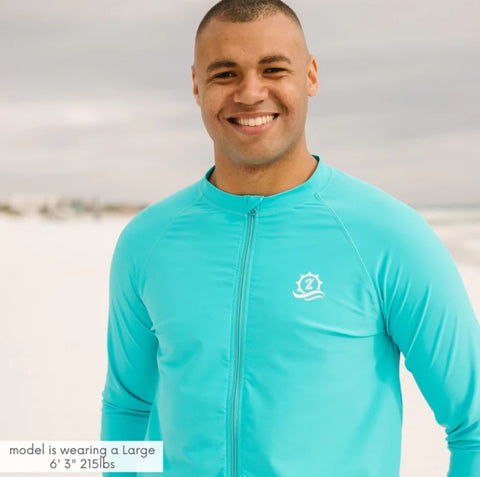
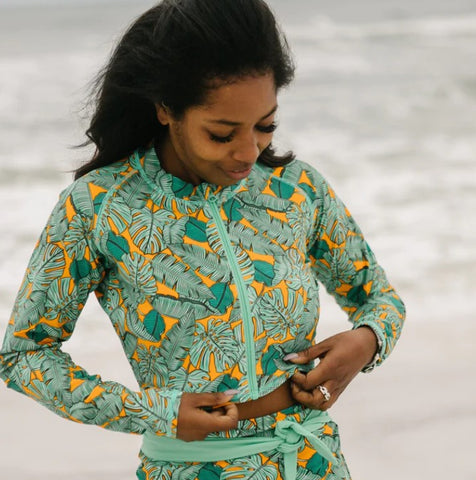
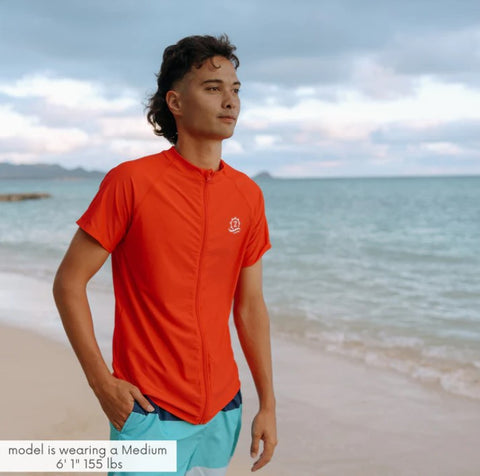
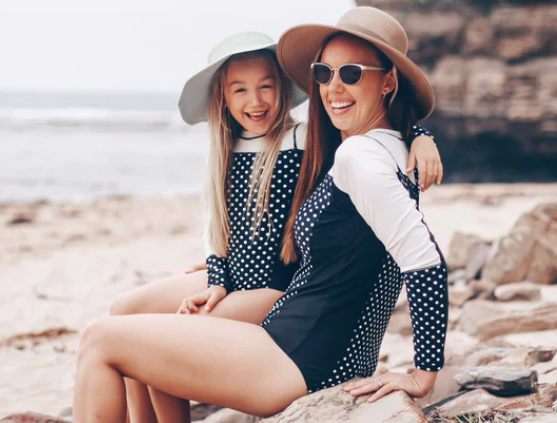
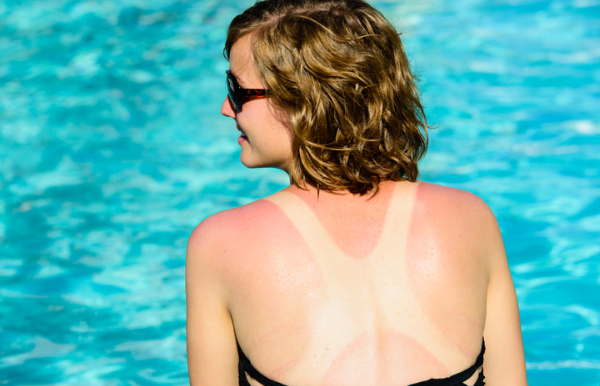
Leave a comment
This site is protected by hCaptcha and the hCaptcha Privacy Policy and Terms of Service apply.